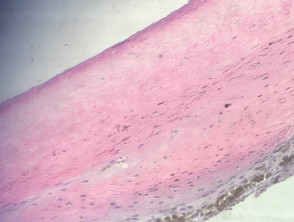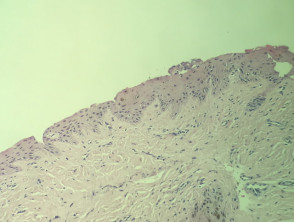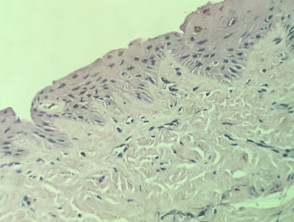Introduction
Subungual melanoma is a cancer that arises from a malignant proliferation of melanocytes in the nail matrix. Typically, it presents clinically as a pigmented streak in the nail plate, which slowly expands at the proximal border and may extend to involve the adjacent nail fold (Hutchinson sign; figure 1).
Histology of subungual melanoma
Histopathologically, the nail plate in subungual melanoma will show abundant diffuse melanin deposition (figure 2). Sections of the matrix and nail bed show a melanocytic lesion with poor circumscription, predominantly single-cell growth, and pagetoid scatter (figures 3 and 4). Junctional nesting and confluence may be seen. The majority of cases demonstrate a combination of epithelioid and dendritic cytomorphology (figure 5). Nuclear atypia and conspicuous nucleoli are often overt but may be subtle.
Subungual melanoma
Special studies for subungual melanoma
Immunohistochemistry using Melan-A and SOX10 can be useful in highlighting the extent and pattern of the melanocytic lesion and help to confirm or rule out invasion. Proliferative markers (eg, Ki-67) can be used to highlight an increased proliferative index.
Fluorescent in-situ hybridisation (FISH) may be used to differentiate melanoma from benign melanocytic lesions.
Differential diagnosis for subungual melanoma
Other diagnoses to be considered include:
- Subungual atypical lentiginous melanocytic proliferation — this moniker has been proposed for difficult cases that don’t fulfil all the criteria for melanoma, particularly in paediatric cases; it is generally recommended that these borderline cases be treated as melanoma (FISH may be used to help illustrate an aneuploid clone, which is likely to be malignant).
- Matrical naevi and lentigines — these lack the atypical histopathological features seen in melanoma.


